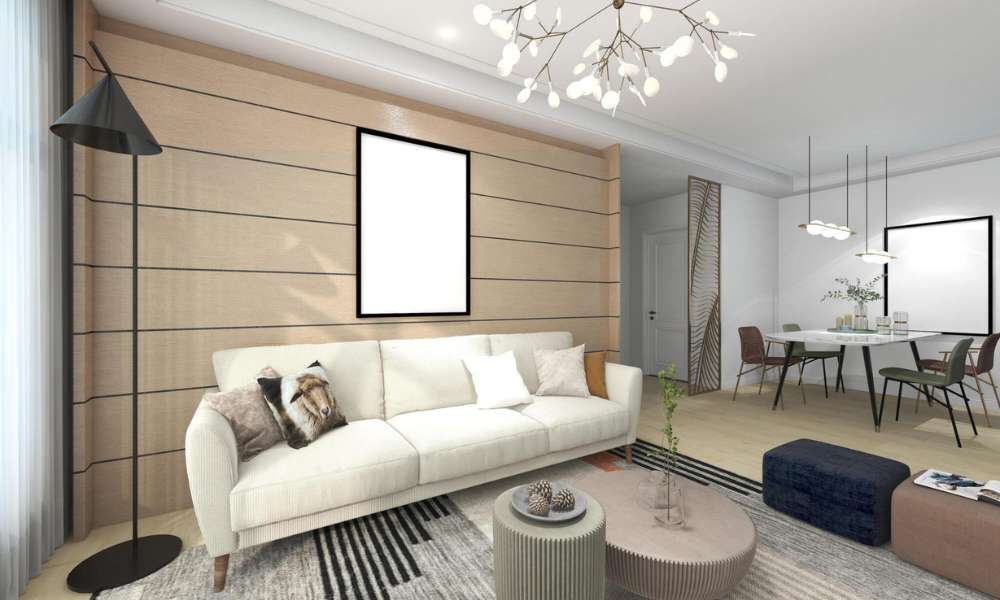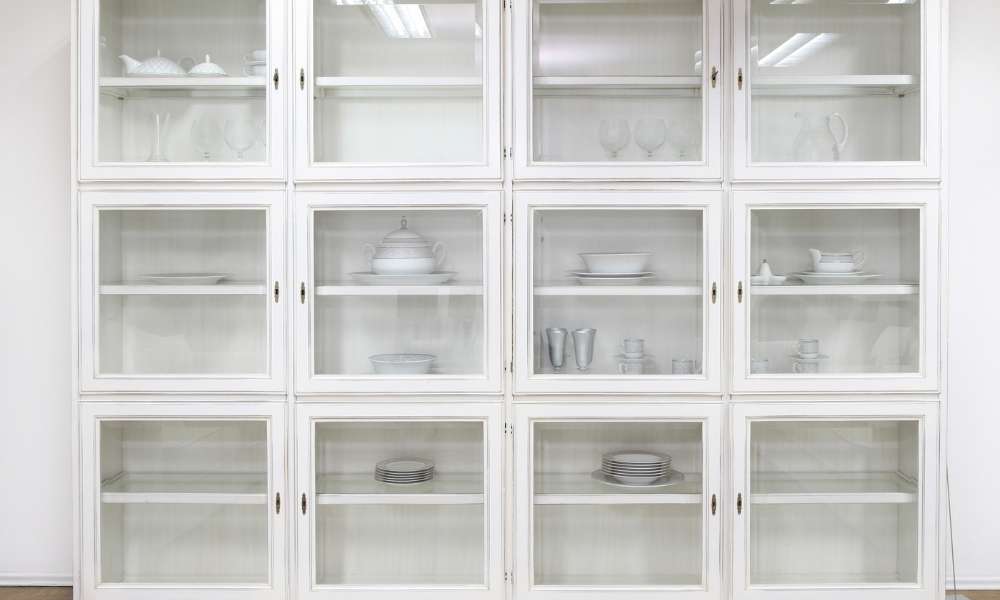Maximizing space in your home becomes crucial when you’re working with smaller areas, particularly the living room and dining room ideas. These spaces, often the heart of a home, must not only be functional but also comfortable and stylish. Whether you’re living in an apartment, a condo, or a small house, there are innovative and creative ways to make the most of the space you have. This guide offers practical tips and ideas to transform your compact living and dining areas into beautiful, multifunctional spaces. From clever furniture choices to color schemes that enhance the perception of space, we’ll explore how to create environments that are both inviting and spacious.
Understanding Your Space
It’s crucial to take precise measurements of your living area. Understanding the dimensions and flow of your space allows you to make informed decisions about furniture sizes and arrangements that won’t overwhelm the area. Consider the natural light sources when planning the layout, as harnessing natural light can make small spaces feel more open and airy. Think about the daily functionality of your living and dining area, envisioning how each piece of furniture will serve a dual purpose to maximize utility without sacrificing aesthetics.
Small Living Room Ideas Apartment
Decorating a small living room in an apartment, it’s important to maximize functionality. Consider using multi-functional furniture pieces such as a sofa bed or ottomans with storage compartments to save space. Opt for light and neutral colors to create a sense of openness and brightness in the room. Consider incorporating mirrors to reflect natural light and give a sense of depth in the space. Additionally, using wall-mounted shelves or floating shelves can provide storage without taking up valuable floor space.
1. Maximize Vertical Space with Wall-Mounted Furniture
Leveraging vertical space is a clever way to amplify storage and display options. Wall-mounted furniture, such as floating cabinets or shelves, not only provides essential storage but also frees up floor space, making your room appear larger and more organized. Consider installing a wall-mounted desk or dining table that can fold down when not in use, offering a perfect blend of flexibility and functionality. This approach not only maximizes the available space but also contributes to a modern, minimalist aesthetic that is both practical and visually appealing.
2. Multifunctional Furniture Is Your Friend
Ingeniously designed multifunctional furniture is the linchpin of creating a space-efficient and stylish area. Pieces that serve multiple purposes not only streamline your space but also provide the flexibility needed for everyday living. For instance, a sleek sofa that transforms into a guest bed can be a game changer for small apartment dwellers. Additionally, consider investing in extendable dining tables, which can be compact for daily use but extend to accommodate more guests when entertaining. Ottomans with hidden storage can double as seating for your area or a footrest for your living space.
3. Keep the Color Scheme Light and Airy
Choosing a light and airy color palette is key to making a small living and dining area feel more spacious and welcoming. Soft, neutral colors, such as whites, creams, and pastels, reflect natural light better than darker shades, effectively enhancing the sense of space. To add depth and interest without overwhelming the room, consider incorporating pops of color through accessories like cushions, rugs, or artwork. This approach allows you to inject personality into your space while maintaining a bright and open atmosphere. Additionally, a consistent color scheme throughout the areas can create a seamless flow, further contributing to the illusion of a larger space.
4. Let in Natural Light
Maximizing natural light can dramatically alter the perception of space within a small living and dining area. Ensure that windows are not obscured by heavy drapery or bulky furniture, opting instead for sheer curtains or blinds that allow light to penetrate the room while offering privacy. If possible, position mirrors strategically across from windows to reflect natural light and visually expand. This approach not only brightens the room but also enhances its overall ambiance, creating a more inviting and comfortable area for relaxation.
5. Use Mirrors Strategically to Reflect Light
Mirrors are not just functional; they can be powerful tools in enhancing the space of a small living and dining area. By reflecting light and the view, mirrors can trick the eye into perceiving more. Position them opposite windows or in areas where they can bounce light effectively around the room. Beyond amplifying light, mirrors can also reflect key aspects of your decor, doubling your visual pleasure and adding depth without the need for additional bulky items. Consider unique shapes or framed mirrors as decorative elements that enhance your aesthetic while keeping feeling open and spacious.
6. Scale and Proportion Are Key
It’s essential to select furniture and decor that align with the dimensions of oversized pieces can quickly overwhelm a small room, making it feel cramped and less functional. Opt for slim-profile furniture that provides the necessary functionality without consuming excessive space. For example, choose a sleek, narrow coffee table or compact side chairs that do not obstruct the flow of the room. Additionally, consider the visual weight of objects; lighter colors and materials can make pieces appear less bulky, contributing to a more spacious feel.
7. Create Visual Separation with Area Rugs
Using area rugs is an effective method to define and separate different areas within a small space. Not only do they add warmth and texture, but they can also help to visually delineate the living area from the dining area, creating a sense of organization and flow without the need for physical barriers. When selecting rugs, ensure they are proportionate to the furniture and space. A too-small rug can make feel disconnected and awkward, while a correctly sized rug can anchor the room and enhance its overall harmony.
8. Curate a Thoughtful Collection of Decor Items
Overloading a small living and dining area with too many decor items can quickly clutter the space and detract from its overall aesthetic. Instead, opt for a more thoughtful curation of decor that reflects your personal style while keeping open and airy. Choose a few high-impact pieces that draw the eye, such as a statement wall art or a unique centerpiece for your dining table. By selecting decor with intention, you prioritize quality over quantity, ensuring each item adds value to the room’s design without overwhelming it.
9. Embrace Vertical Lines for Height
Incorporating vertical lines into the design of a small living and dining area can significantly impact the perception of height, making the space feel larger and more open. This can be achieved through various means, such as installing tall, slender bookcases or utilizing wallpaper with vertical stripes. Even small touches like vertically oriented decorative items or floor lamps can draw the eye upward, creating the illusion of a higher ceiling. When you emphasize the vertical dimension, you not only enhance the spatial experience but also introduce an element of visual interest that can make appear more expansive and elegantly designed.
10. Soak in the Joy of a Thoughtfully Designed Living Space
There’s undeniable satisfaction in residing in a living and dining area that’s not only functional but aesthetically pleasing as well. A thoughtfully designed space can dramatically enhance your daily living experience, turning ordinary moments into pockets of joy and comfort. Take time to savor the beauty of your surroundings, whether it’s enjoying a quiet morning coffee in a sunlit corner or hosting a lively dinner with loved ones in your cozy dining area. Remember, the ultimate goal of interior design, especially in constrained, is to create an environment that reflects your style and meets your needs, making every square inch count.
Conclusion
Designing a small living and dining area requires careful planning and creativity to maximize the space available. By utilizing multifunctional furniture, strategic placement of decor, and incorporating light colors and mirrors, you can create a visually appealing and functional. Consider adding storage solutions to keep the area organized and clutter-free. Remember that less is more, so focus on quality over quantity when selecting furniture and decor. With these ideas in mind, transform your small living and dining area into a stylish and inviting that meets all your needs.





